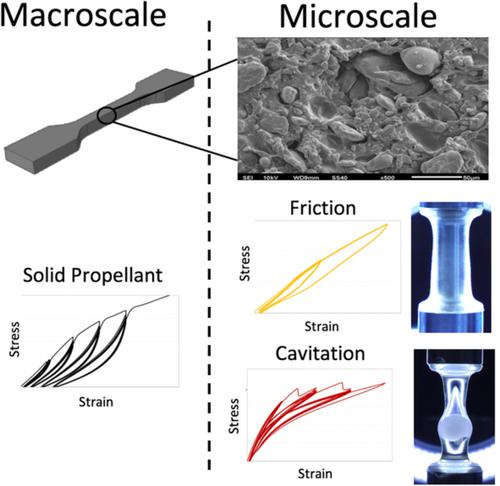当前位置:
X-MOL 学术
›
J. Appl. Polym. Sci.
›
论文详情
Our official English website, www.x-mol.net, welcomes your
feedback! (Note: you will need to create a separate account there.)
An original experimental approach showing that most nonlinearities expressed by filled elastomers relate to microscopic friction and cavitation
Journal of Applied Polymer Science ( IF 2.7 ) Pub Date : 2020-09-29 , DOI: 10.1002/app.49941 Marion Picquart 1, 2 , Gilles Poirey 1 , Guillaume Puel 2 , Denis Aubry 2
Journal of Applied Polymer Science ( IF 2.7 ) Pub Date : 2020-09-29 , DOI: 10.1002/app.49941 Marion Picquart 1, 2 , Gilles Poirey 1 , Guillaume Puel 2 , Denis Aubry 2
Affiliation

|
Filled elastomers present a highly nonlinear behavior when submitted to cyclic mechanical loads. Origins of these nonlinearities are still uncertain, but many models rely on micromechanisms such as friction or cavitation at the filler/binder interface. To substantiate these hypotheses, an experimental approach is proposed to assess the real effects of friction and cavitation on the macroscopic response of filled elastomers. A linear, viscoelastic, transparent material is used to create macroscopic samples in which mechanisms are activated, separately or jointly. The response of these samples to cyclic mechanical loads shows that each mechanism generates some typical nonlinearities. A deeper analysis of the resulting curves allows a correlation between the nonlinearities characteristics (shapes and amplitudes) and the ones expressed by filled elastomers, providing clues for the development of future models.
中文翻译:

原始实验方法表明,填充弹性体表示的大多数非线性都与微观摩擦和空化有关
当承受周期性机械载荷时,填充的弹性体表现出高度的非线性行为。这些非线性的起因仍然不确定,但是许多模型依赖于微观机制,例如填充物/粘合剂界面处的摩擦或气蚀。为了证实这些假设,提出了一种实验方法来评估摩擦和气蚀对填充弹性体宏观响应的实际影响。线性,粘弹性,透明的材料用于创建宏观样本,其中机制被单独或联合激活。这些样本对周期性机械载荷的响应表明,每种机制都会产生一些典型的非线性。
更新日期:2020-11-25
中文翻译:

原始实验方法表明,填充弹性体表示的大多数非线性都与微观摩擦和空化有关
当承受周期性机械载荷时,填充的弹性体表现出高度的非线性行为。这些非线性的起因仍然不确定,但是许多模型依赖于微观机制,例如填充物/粘合剂界面处的摩擦或气蚀。为了证实这些假设,提出了一种实验方法来评估摩擦和气蚀对填充弹性体宏观响应的实际影响。线性,粘弹性,透明的材料用于创建宏观样本,其中机制被单独或联合激活。这些样本对周期性机械载荷的响应表明,每种机制都会产生一些典型的非线性。











































 京公网安备 11010802027423号
京公网安备 11010802027423号